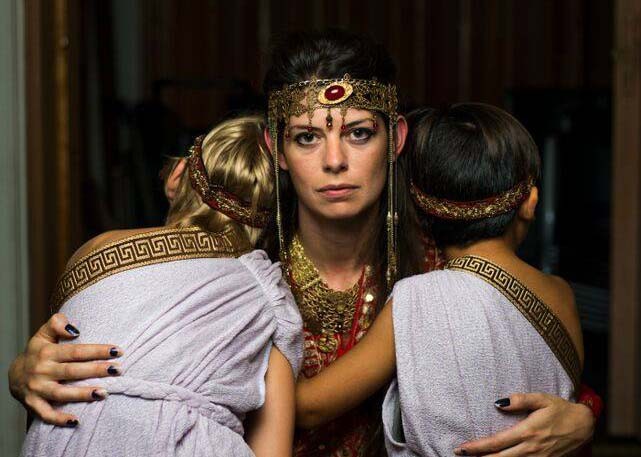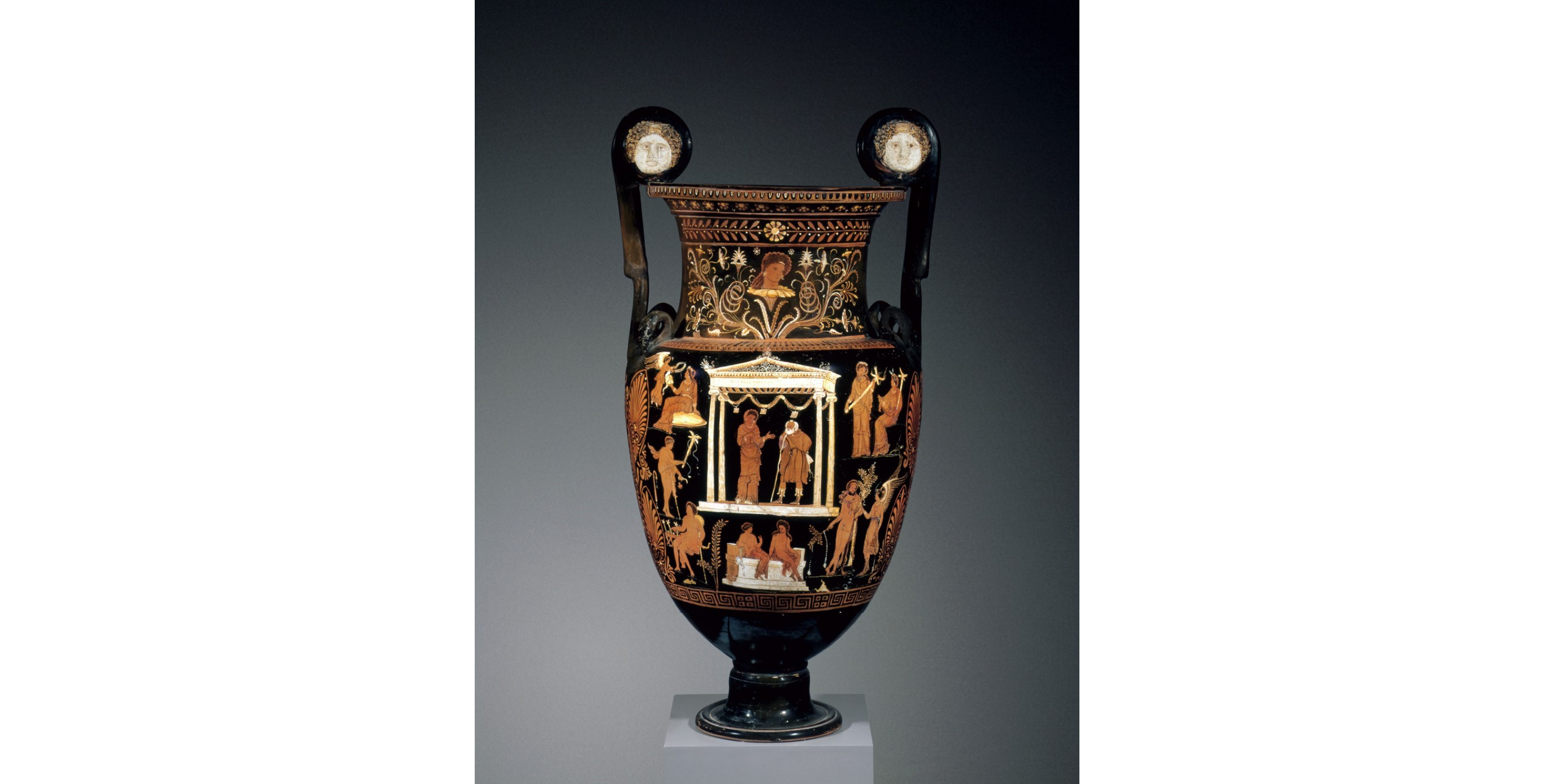Medea was many things: a Colchian princess, the granddaughter of the sun god, and a powerful witch, but all of these identities pale in comparison to her role as the brutal murderer of her children. This version, however, of Medea as killer, may not have existed before Euripides composed his tragedy Medea. One story tells of her children dying by accident after Medea hid her children away within a Temple of Hera, mistakenly believing that this would turn them immortal. Other stories name the Corinthians as the murderers of her children. In yet another version, Medea still flies away from Corinth, this time taking her living children with her.1

In order to set up this tragic ending, Euripides emphasizes Medea’s role as mother throughout the play, often in ways which draw attention to her looming agonizing choice. At the opening of the play, the children’s nurse describes her fear regarding the safety of the children in the face of Medea’s cold rage. In Medea’s first appearance in the play, after she has just learned she is to be abandoned and exiled by her husband Jason, she ties the unfair lot of hers to her gender, famously proclaiming that she wishes she had been born a man, preferring to go into battle three times rather than experience childbirth once.2 She vacillates between rage at this betrayal and despair at her hopeless situation, vowing to enact vengeance one minute and begging Jason to take care of their children, saving them from sharing her exile, the next. Medea’s violence and her role as mother are inextricable from one another.

So then we must ask: if Euripides invented the Medea who purposefully slaughters her children, why arrange the play around this empathetic portrait? This narrative choice sets up the great tragedy of Medea’s story, not necessarily the events themselves, but what Medea’s lack of social power forces her to do. In her new Corinthian home, Medea had no political power. As a woman and a foreign woman at that, she lived at the will of her husband, who was easily able to discard her and their children when the opportunity for self-promotion appeared.
We should not let Medea’s murderous capacity, or her divine escape, blind us to the way she was marginalized in her lived reality. And Medea’s violent reaction pushes back on these systems of oppression, transcending normative gender, and even human, boundaries. Her violent slaughter of the children with a sword evokes the image of a male soldier, and the target of her violence is Jason’s role as a father and king. She kills his heirs and eliminates any hope of future ones by sending her own children with a poison robe to Glauce, killing Jason’s new bride. Even though these are unforgivable acts, Medea’s pain keeps audience sympathy for her alive throughout the play. Despite loving her children, she cares to punish Jason more. Medea is more than tragic victim or deadly villain – she is a human pushed to her absolute breaking point until she breaks free in divine flight.
Learn More
- For a feminist interpretation of Medea, read “Murderer and Trailblazer: Medea as a Feminist Text” by Kyle Kim.
- For further reading on Medea and themes of motherhood, check out Kathleen Roberts’ chapter, “Sōtēria, the Mother as Other: Medea in Ancient Greece (and Beyond),” in Alterity and Narrative: Stories and the Negotiation of Western Identities, State University of New York Press, 2007.
- For more information about the volute krater shown above, refer to this analysis provided by the Princeton University Art Museum.
Audrey Wallace recently received her Ph.D. from Bryn Mawr College in Greek, Latin, and Classical Studies in 2023, where she also received her M.A. in 2017.